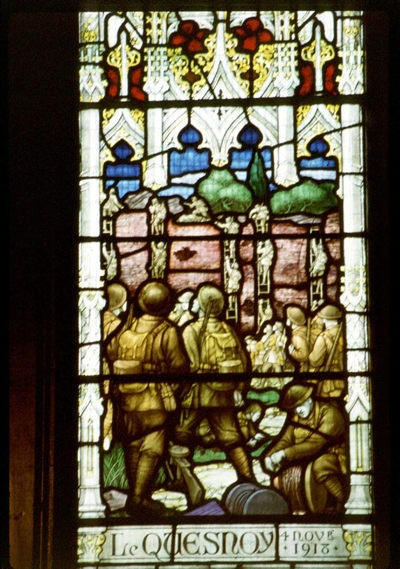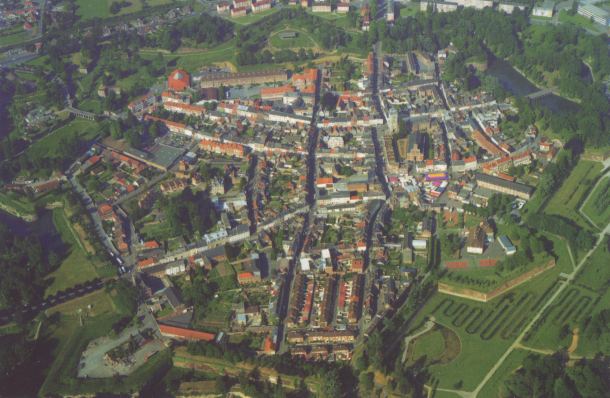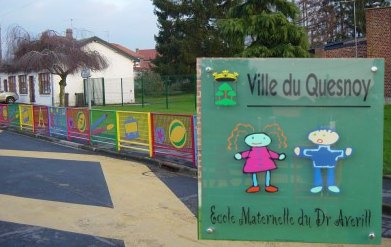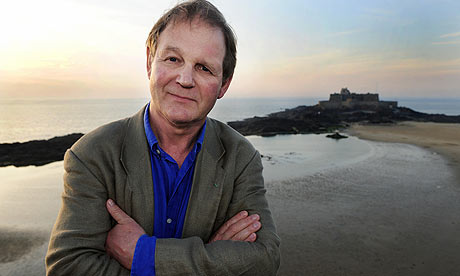Le
Quesnoy: The story of the town New Zealand saved by Glyn Harper, illustrated by Jenny Cooper (Puffin,
2012)
32-page
picture book with lots of full page colour illustrations
Le Quesnoy is a
historic town in northern France, surrounded by walls and moats. This book
tells how New Zealand forces liberated it in November 1918, right at the end of
the First World War, from the Germans who had held it for the past four years – and how
they managed to do that, with bravery and ingenuity, so as not to destroy or
damage the town itself.
The story is told through the eyes of a small
girl living in the town, who makes sure to tell us at the beginning how to
pronounce its name: Ler kay nwah.
Jenny Cooper’s warm
and beautiful watercolours catch the feel of the French town, complete with
bicycles and baguettes, hats and berets, shuttered windows and French flags. I like the careful way she has shown us that only the women, children
and old people are left behind, once the young men have gone off to war, and
how they look hungrier and thinner as the war goes on.
There is a map of the
town on the endpapers, and a page of factual information on The liberation of
Le Quesnoy at the back. “The latest research indicates that 130 New Zealanders
were killed and another 300 were wounded in the military action that captured
the town.”
Storylines Notable Picture Book for 2013
Storylines Notable Picture Book for 2013
Reviews:
Three new picture books for Anzac Day, reviewed on the National
Library’s Create readers blog.
About
the author:
(From the
Penguin website):
“Glyn Harper is
Professor of War Studies at Massey University in Palmerston North, New Zealand.
He is now General Editor of the Centenary History of New Zealand and the First
World War. A former teacher, he joined the Australian Army in 1988 and after
eight years transferred to the New Zealand Army, where he rose to the rank of
lieutenant colonel. Glyn was the army's official historian for the deployment
to East Timor and is the author of eighteen books …[including] his most recent Letters from Gallipoli: New Zealand
Soldiers Write Home. Le Quesnoy is his seventh children's book.”
Some of the others
include The donkey man (Reed, 2004)
and My grandfather’s war (Penguin, 2007).
About the
illustrator:
This is Jenny Cooper's page on the New Zealand Book Council site.
NZ
connections:
This has become one of the most famous stories in
New Zealand military history and the relationship between Le Quesnoy and New
Zealand continues to this day. You can read more about it on pg 40 of Anzac Day: the New Zealand story.
 |
National Collection of War Art, Archives New Zealand
Reference: AAAC898 NCWA 535
Artist: George Edmund Butler |
| New Zealand troops marching through the bombed town of Le Quesnoy, France. Ross, Malcolm 1862-1930 :Alexander Turnbull Library, Wellington, New Zealand. http://natlib.govt.nz/records/22885118 |
Today, Le Quesnoy even has street names with a kiwi theme (e.g. Place des All Blacks) and is twinned with Cambridge, here in the Waikato.

This is a detail of the war memorial window in St Andrew's Church, Cambridge, New Zealand. The image shows New Zealand soldiers
scaling the walls at Le Quesnoy. The caption reads 'Le Quesnoy 4 Nov 1918'.(New Zealand history online, taken by Jock
Phillips)
There is more information about the relationship between New Zealand and Le Quesnoy here on the New Zealand online site.
And more images here on the New Zealand and Le Quesnoy Media gallery.
Links:
Welcome to Le Quesnoy: useful information for visiting the town.
Information on Le Quesnoy from the New Zealand Embassy in Paris.
The friendship association between the towns of Cambridge and Le Quesnoy. |
| An aerial view of the town today. |
 |
| The school is named after the commander of the New Zealand troops, Lieutenant Averill. |





/images/stamps/145812.jpg)
